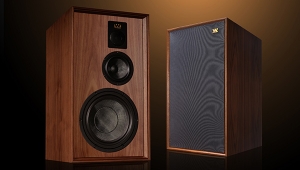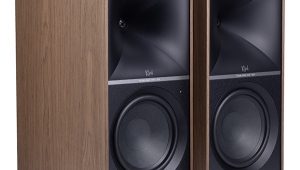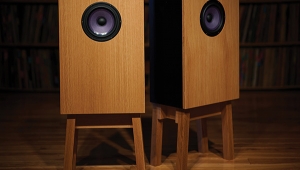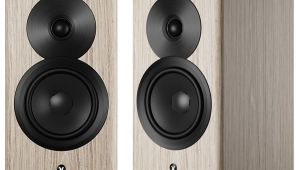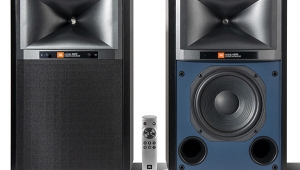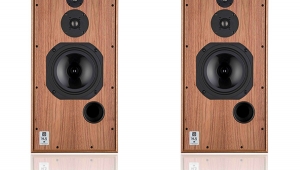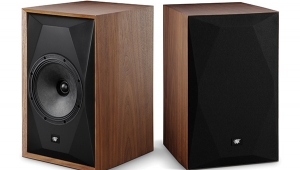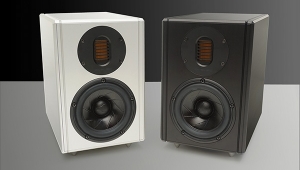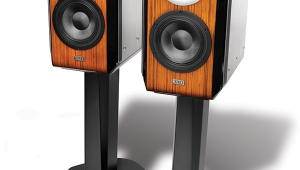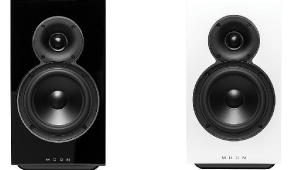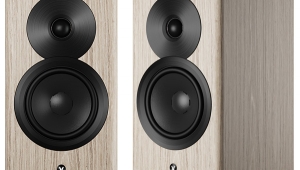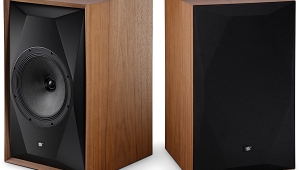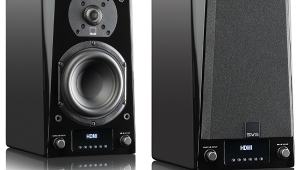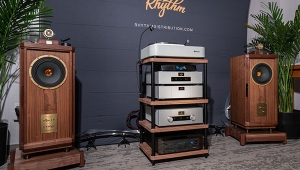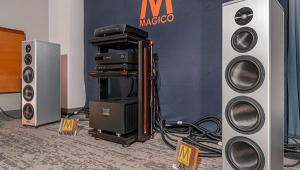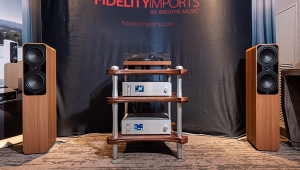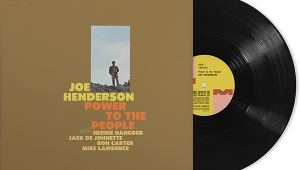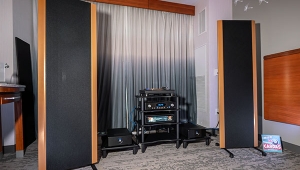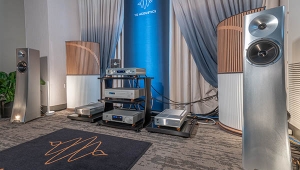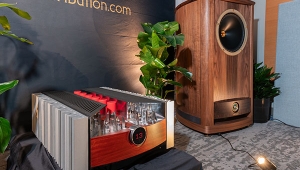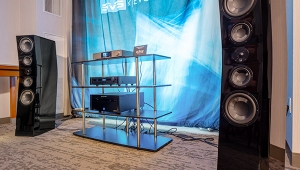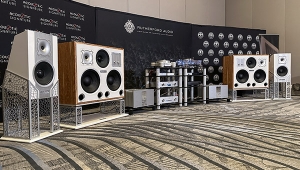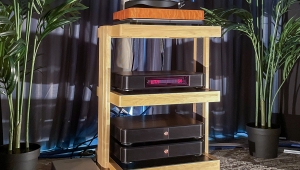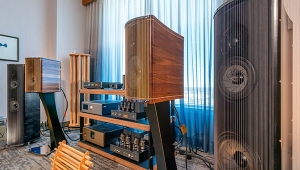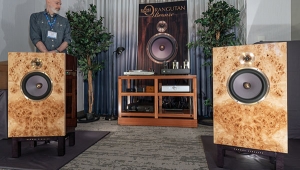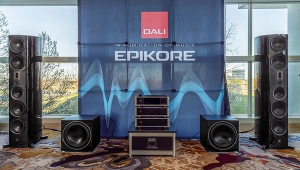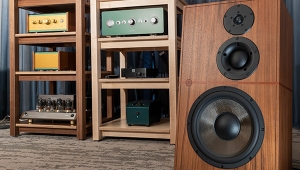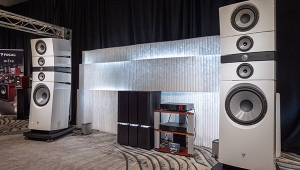| Columns Retired Columns & Blogs |
Thiel SCS2 loudspeaker Measurements
Sidebar 2: Measurements
Thiel loudspeakers are traditionally quite difficult loads for an amplifier to drive. The SCS2 is no exception, its impedance magnitude (the solid trace in fig.1) remaining below 5 ohms over almost the entire audio band. In addition, while the electrical phase angle (dotted trace) is low at almost all frequencies, it does become quite capacitive below 200Hz, which, combined with the low magnitude between 80Hz and 200Hz, will make high current demands on the partnering amplifier. The B-weighted voltage sensitivity is also only moderate at 85dB/2.83V/m, meaning that a reasonably high-power amplifier should be used. Note the smoothness of the curves throughout the midrange. This implies an absence from cabinet resonance problems.
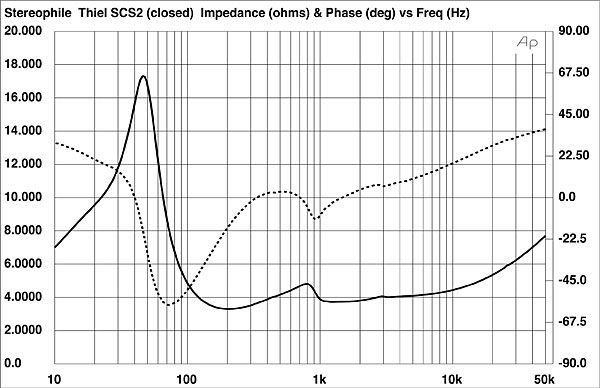
Fig.1 Thiel SCS2, ports closed, electrical impedance (solid) and phase (dashed) (5 ohms/vertical div.).
The impedance plot was taken with the twin ports plugged using the supplied foam. The speaker behaves as a sealed-box design, the single peak at 47Hz revealing the cabinet's bass tuning. Removing the foam plugs results in the traditional "double-humped" reflex impedance curve (fig.2), with the ports tuned to 40Hz.

Fig.2 Thiel SCS2, ports open, electrical impedance (solid) and phase (dashed) (5 ohms/vertical div.).
The difference in measured bass response between the two tuning conditions can be seen in the SCS2's response graph (fig.3). The red trace that rolls off early, reaching its –6dB point (half the sound-pressure level) at 52Hz, is with the plugs in the ports; this will work best in small rooms or with systems that tend to be a bit bass-heavy. The bass will also be best-defined with the ports sealed. The fig.3 blue trace that extends lower in frequency is with the speaker reflex-loaded. The –6dB point is now significantly lower in frequency, at 34Hz. This will work best in rooms that are a little lean-sounding.
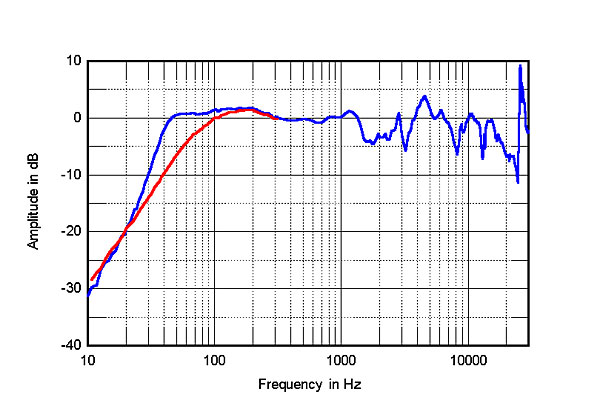
Fig.3 Thiel SCS2, anechoic response on tweeter axis at 50", averaged across 30° horizontal window and corrected for microphone response, with complex sum of nearfield responses plotted below 300Hz with ports closed (red) and open (blue).
Higher in frequency in fig.3, the midrange can be seen to be impressively flat. The treble, however, is broken up by regular peaks and dips. Other than the ultrasonic (hence inaudible) peak at 26kHz, which is due to the tweeter dome's "oil-can" resonance, I assume these are caused by interference phenomena due to the coaxial tweeter/woofer arrangement.
As the peaks seem balanced by the dips, the total effect on the speaker's balance may well be okay. And indeed, Wes Phillips was not bothered by mid-treble balance problems. If anything, he found the speaker to sound rather "dark." This might be due to the lack of upper-midrange energy on-axis. On the other hand, the speaker's high-treble dispersion might also be a factor, as the tweeter becomes quite directional above 8kHz or so, meaning that the room's reverberant field will be down in top-octave energy. Below 5kHz, however, the little Thiel's dispersion is remarkably even, in both horizontal (fig.4) and vertical (fig.5) planes.
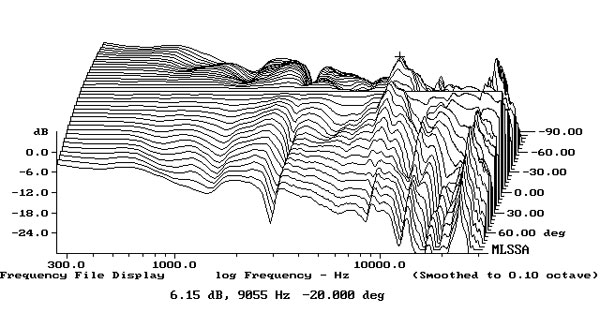
Fig.4 Thiel SCS2, lateral response family at 50", normalized to response on tweeter axis, from back to front: differences in response 90–5° off axis, reference response, differences in response 5–90° off axis.
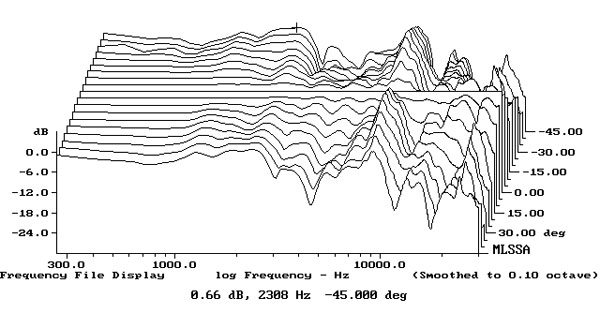
Fig.5 Thiel SCS2, vertical response family at 50", normalized to response on tweeter axis, from back to front: differences in response 45–5° above axis, reference response, differences in response 5–45° below axis.
As expected from a Jim Thiel design, the SCS2 is time-coherent. Despite its second-order crossover, the coaxial drive-unit arrangement allows it to produce phase-linear impulse and step responses (fig.6). The cumulative spectral-decay or waterfall plot (fig.7) is relatively clean in the midrange and mid-treble, but a resonant mode could be seen just below 3kHz. This might well be a residual mode in the midrange/woofer's metal cone. Again, WP was not bothered by anything amiss in this region.
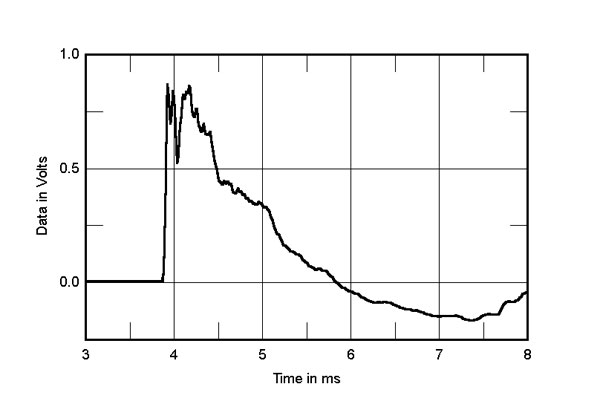
Fig.6 Thiel SCS2, step response on tweeter axis at 50" (5ms time window, 30kHz bandwidth).
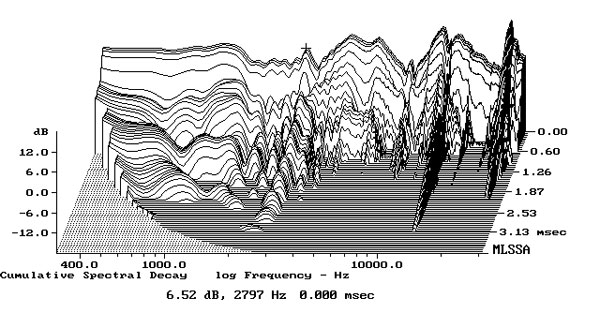
Fig.7 Thiel SCS2, cumulative spectral-decay plot on tweeter axis at 50" (0.15ms risetime).
finally, the impedance plot implied a freedom from cabinet resonances. Checking the enclosure surfaces with an accelerometer, I could find a low-level mode at 440Hz, present on all surfaces (fig.8), but that was all.—John Atkinson
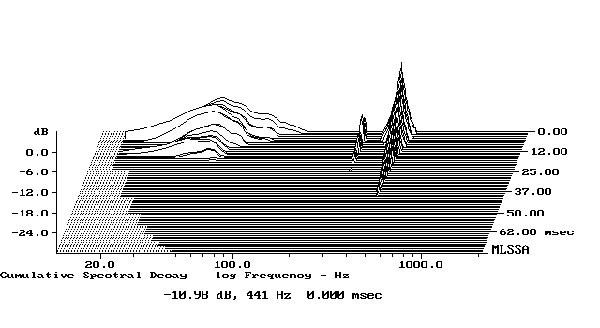
Fig.8 Thiel SCS2, cumulative spectral-decay plot calculated from output of accelerometer fastened to center of side panel (MLS driving voltage to speaker, 7.55V; measurement bandwidth, 2kHz).
- Log in or register to post comments
